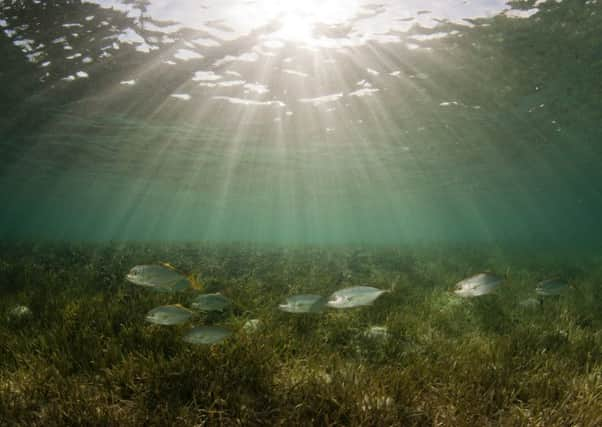Platform; Loss of seagrass meadows is a carbon time bomb


Seagrass is a land-based plant that colonised the ocean, similar in many ways, to more conventional grass you find in your back garden. The blades of grass can be over 1 metre tall. Seagrass meadows provide a place to survive for young fish and numerous other small critters. These animals, often the seafood species we eat, forage for their own food on the life-rich ocean floors and hide from larger predators in the dense plant ‘undergrowth’. Many call seagrass meadows the powerhouses of the sea directly because of this ability to create life in otherwise barren environments.
To give you an idea of how important seagrass meadows are in supplying food for us and other animals, it’s best to keep thinking of an area of seagrass as the size of a football pitch When scientists investigate that area of seagrass they find over 40,000 fish living amongst the blades of grass, as well as some 50 million small invertebrates (such as shrimp, crab and lobster). Globally, over a billion people live within 50km of a seagrass meadow and many millions of people obtain their dietary protein from animals that lived in seagrass meadows – often without ever knowing it. The rate at which seagrasses are declining worldwide is faster than you heard about for coral reefs and rainforests, but we overlook them. Indeed we don’t talk about seagrass loss nearly enough. The two football fields of it lost each day equate, according to a recent global study, to destruction of 29 percent of the world’s known seagrass since 1879. Worse still, the losses were accelerating.
Advertisement
Hide AdAdvertisement
Hide AdThe statement signed by scientists this week hopes to bring the value of seagrass meadows to the public light. The statement’s sentiment is that these ocean prairies are “key fishing grounds”, as well as “one of the most efficient oceanic stores of carbon on earth”, is shared by Scottish scientists. Maria Potouroglou, a leading researcher at Edinburgh Napier University has been conducting extensive research on seagrasses. Her research shows Scottish seagrasses have already stored around 20 Megatonnes of carbon dioxide, a greenhouse gas that would otherwise have ended up in our atmosphere contributing to climate change.
At Glasgow University, research by another Scottish seagrass scientist, Lauren Clayton, is being conducted into just how important our coastal seagrass meadows are in providing habitat for our famous Scottish seafood.
This week, myself and other colleagues from Project Seagrass (a charity we set up to raise the profile of seagrass ecosystems) are hosting the 12th International Seagrass Biology Workshop in North Wales under the tagline “Securing a future for seagrass”. We admit that it’s an ambitious goal. Global collaboration is key for meeting the challenges of the future.
I am personally looking forward to welcoming leading international scientists from Sweden and Australia to Scotland in the week after the conference. We’ll be discussing and sharing knowledge on the most effective methods for restoring our coastal seagrass meadows.
Richard Lilley is the Founding Director of Project Seagrass